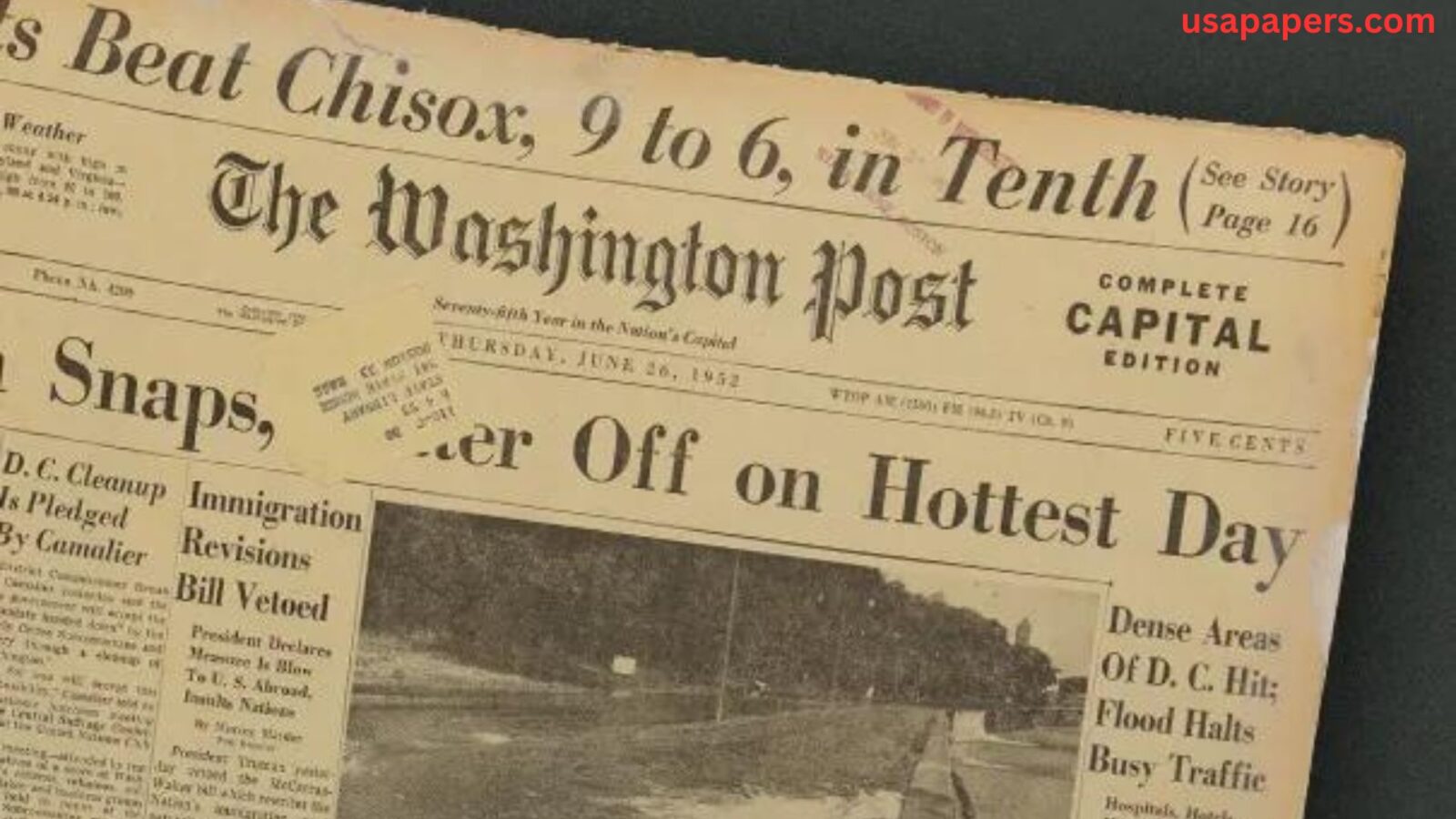The Washington Post Newspaper collection contains administrative files relating to editorial, personnel and planning matters. You will also find organizational charts and informational pamphlets. The Post’s Springfield, Virginia satellite printing plant is formally opened on Nov. 7 enabling the newspaper to be printed using cold type. It also allows the newspaper to create a weekly zoned section called the Maryland, District, and Virginia Weeklies.
Founded in 1877-Washington Post
Founded in 1877, The Washington Post (also known as WaPo and sometimes abbreviated as the Post) is the most widely-read newspaper in the United States. The paper has long been considered one of the most influential American newspapers and is renowned for its investigative journalism. The newspaper’s national and international politics coverage is particularly well respected. It has won several awards and honors for its journalism, including 18 Nieman Fellowships and 368 White House News Photographers Association awards.
The newspaper first gained national fame in the early 1970s after Post reporters Bob Woodward and Carl Bernstein uncovered the Watergate scandal. This political scandal revealed illegal activities on the part of President Richard Nixon during his reelection campaign and ultimately led to his resignation. The Post received a 1973 Pulitzer Prize for its reporting.
The collection contains every issue of the newspaper since its founding in 1877. It also includes files on the newspaper’s owners, including early owners Stilson Hutchins and Beriah Wilkins, as well as later Post owner Eugene Meyer and his family members. The collection also contains files on Post staff, including Agnes E. Meyer, Katharine Graham, Philip L. Graham, and Donald Graham, as well as speeches and biographies of these individuals. The collection also includes videos and photographs of various events, awards, and staff celebrations.
Watergate Scandal
On June 17, 1972, five men broke into Democratic National Committee headquarters at the Watergate hotel and office complex in Washington, DC. They were carrying cash, weapons, and high-end surveillance equipment. They were also attempting to retrieve information from psychiatrists that had treated Daniel Ellsberg, the man who leaked the Pentagon Papers. The burglars were caught and arrested by police. They were tied to the Committee for the Re-election of the President, or CREEP, which was presided over by John Mitchell, Nixon’s attorney general.
Soon, the Washington Post’s Bob Woodward and Carl Bernstein began reporting on the case, with the help of a mysterious informant named Deep Throat. The FBI took over the investigation of the break-in. As evidence emerged, a growing number of people—including court-appointed judge John Sirica and members of a Senate investigative committee—began to suspect that the White House was trying to cover up the break-in.
By the time the trial of the Watergate burglars began in January 1973, revelations about the conspiracy had tipped the balance of public opinion against Nixon. His abuse of presidential power left the nation deeply distrustful of government and exacerbated a sense of pessimism that was already pervasive after years of war, economic hardship, and tragedy, including the assassinations of Martin Luther King and Robert F. Kennedy. This distrust of government has lasted to this day.
Jimmy the Heroin Addict
Thirty years ago this week, The Washington Post published a front-page article about an 8-year-old heroin addict named Jimmy. It was a heart-wrenching story that went on to win the Pulitzer Prize, but it wasn’t true. In fact, the entire thing was a hoax.
The story was written by Janet Cooke, a young reporter with a fresh-out-of-Columbia attitude and a strong desire to be noticed. She crafted a story that had all the markings of a sensational scoop: a fourth-grader living in a “heroin shooting gallery,” a drug dealer who would shoot Jimmy with a needle in his bony arm every day until he fell into a hypnotic state, and a city mayor and health and police officials desperately searching for the child to arrest him.
As a result of the article, many people started looking at heroin addicts with new suspicion. Milton Coleman, the Post’s city editor, was one of them. He had some misgivings about Cooke’s story, but he put them down to professional jealousy.
The day before the story ran, a staff artist created a sketch of Jimmy that was to run inside the newspaper. The illustration shows a young boy, slender and with huge eyes, lying on his stomach with his arms raised in a half-smile as someone fires a shot of heroin into his body.
The Wall Street Journal Newspaper
The New York Times-One Of The Best USA Papers
The 2016 Presidential Campaign
A full year has passed since Donald Trump won the presidential election, and the nation has not moved on. It continues to grapple with how such a bizarre campaign could take place, and it continues to search for a way to better understand it all. Collision of Power is a journalistic roadmap that guides readers ably through the Post’s last stop on that journey, and it also opens up its reporter’s methods for breaking consequential news.
Among the many other Post accomplishments under Baron’s watch were its investigations of Secret Service security lapses, poverty and food stamps and the revelations in the Snowden files. He also busted the Catholic Church for sexual abuse, led distinguished reporting on the Elian Gonzalez story and a series of articles about the disputed 2000 election that ultimately forced a recount.
But perhaps the most significant achievement during Baron’s tenure was The Washington Post’s exhaustive coverage of the 2016 campaign, which ultimately informed voters on a host of policy issues and shaped their views of the candidates’ fitness for office. The vast majority of the newspaper’s coverage — about 87 percent for both Trump and Clinton in the general election — was negative in tone. Non-horse race topics, such as their respective policies and leadership abilities, were far more positive, but those subjects accounted for only a small portion of the newspaper’s overall coverage.


















Leave a comment